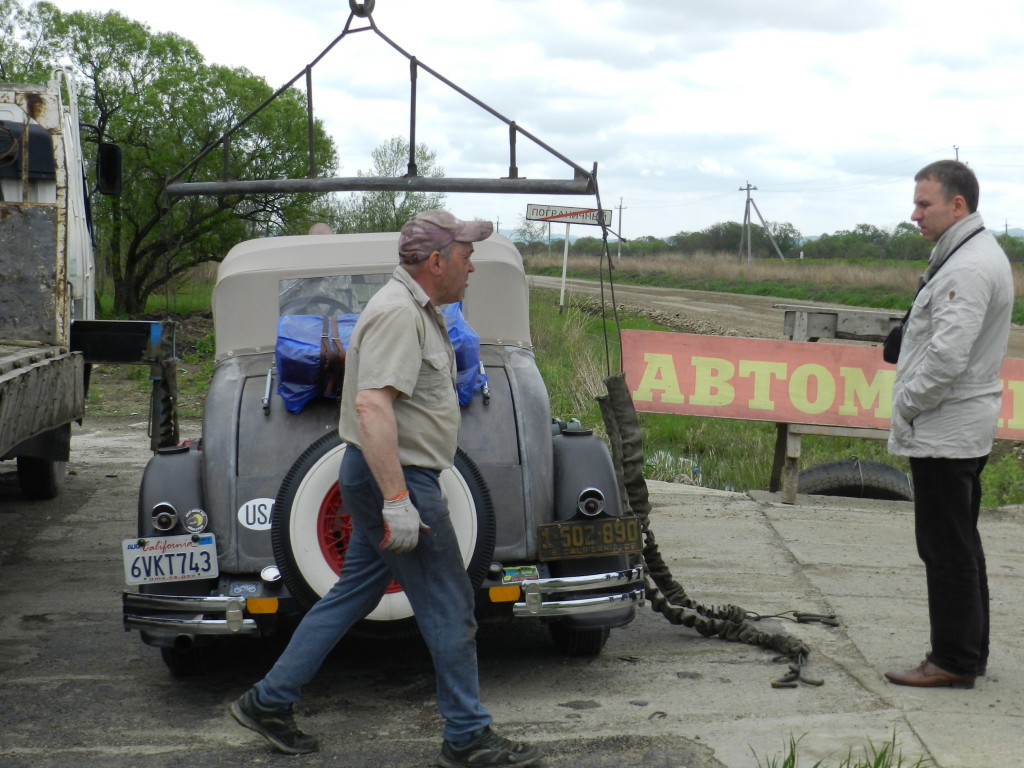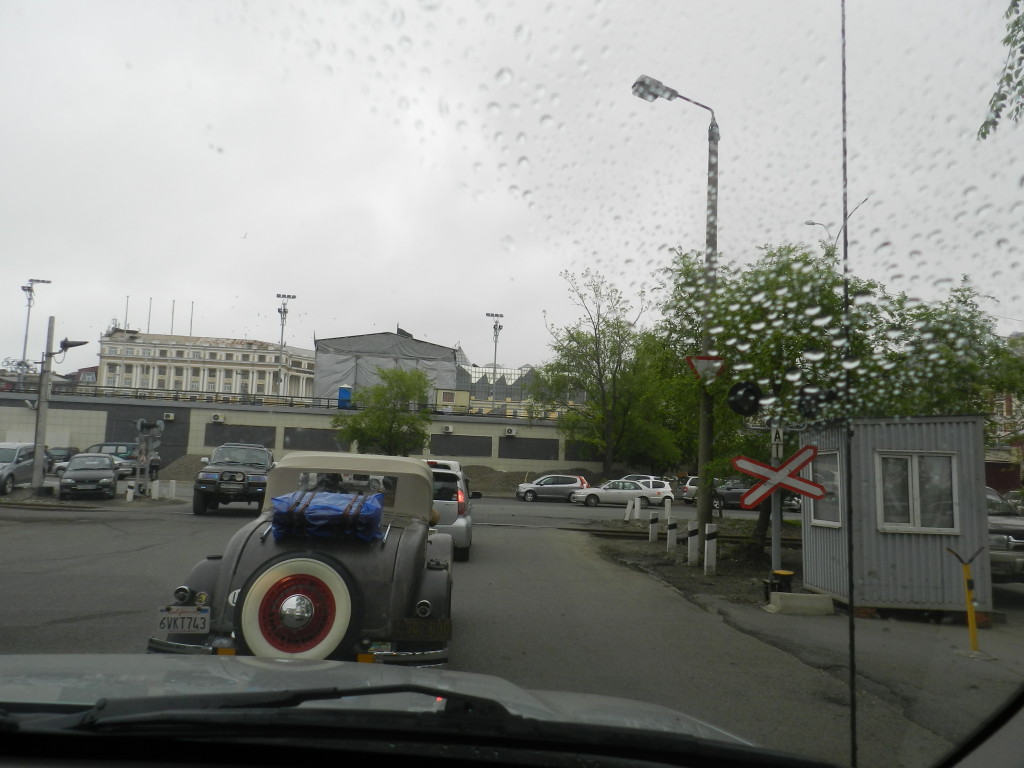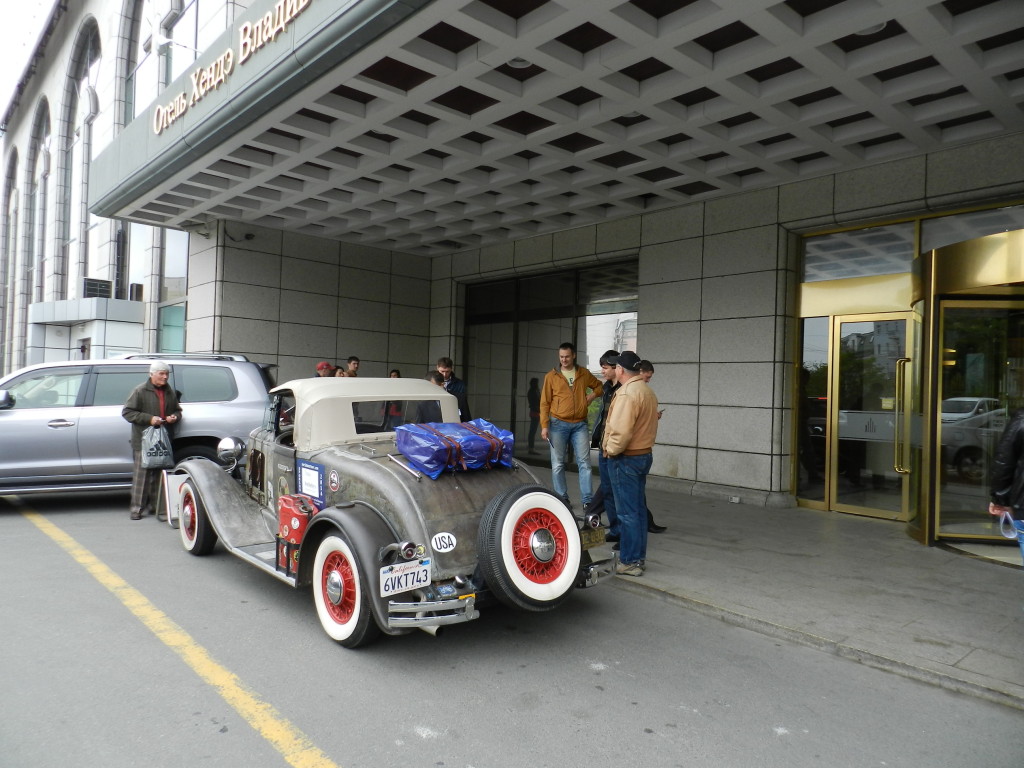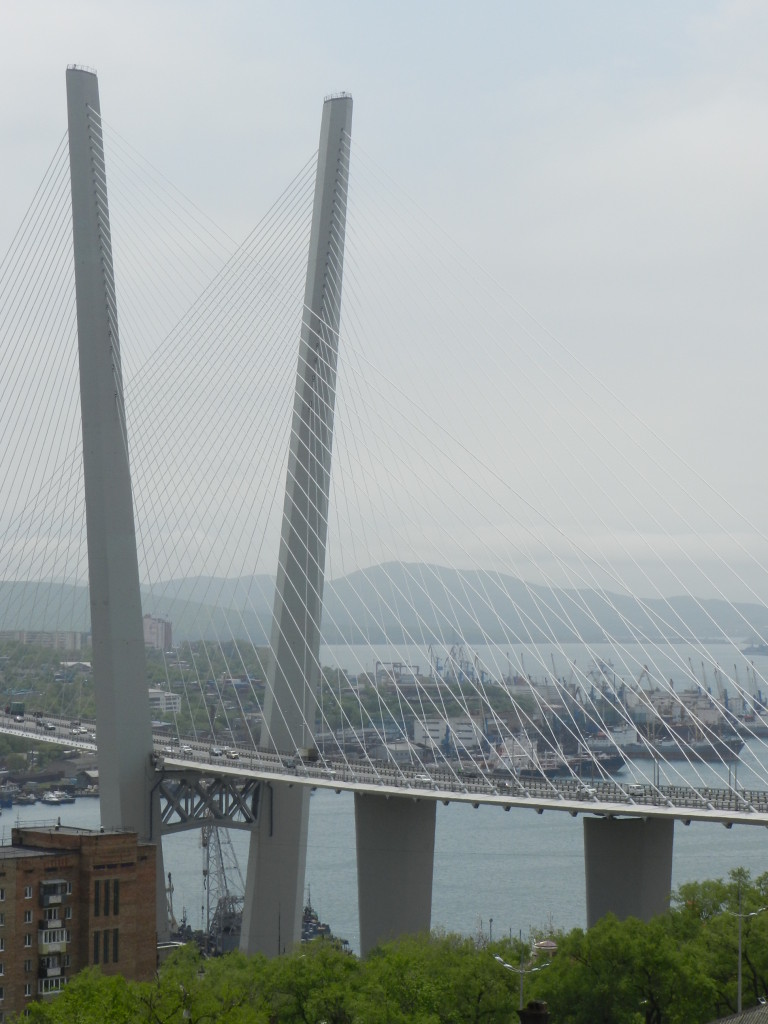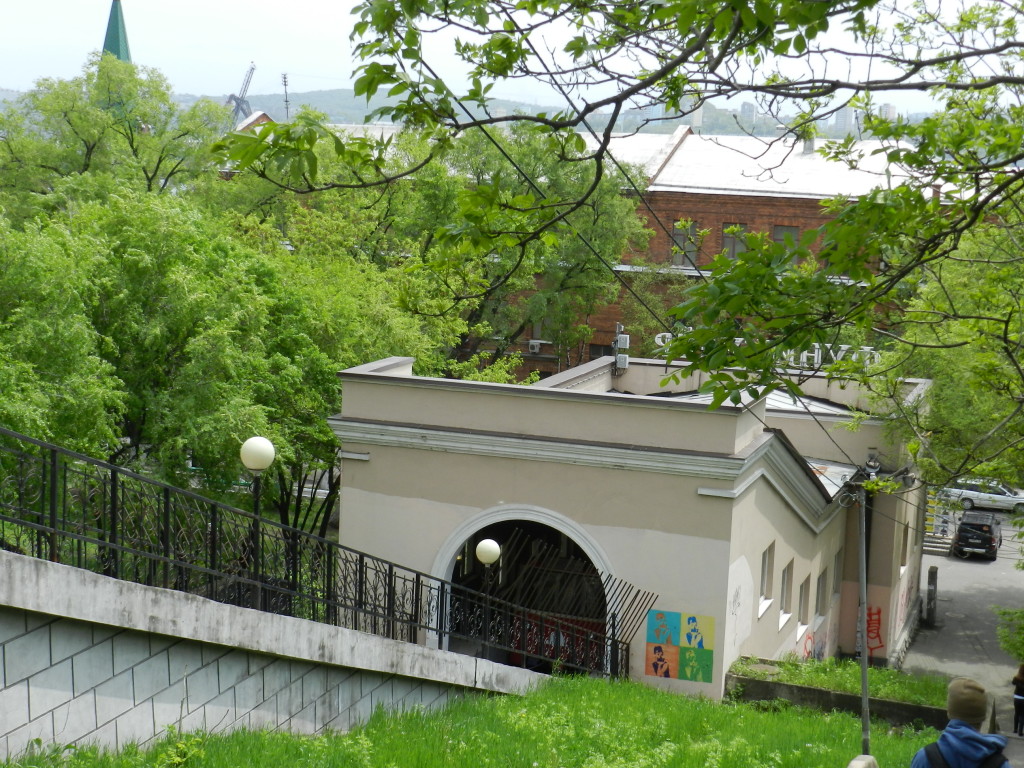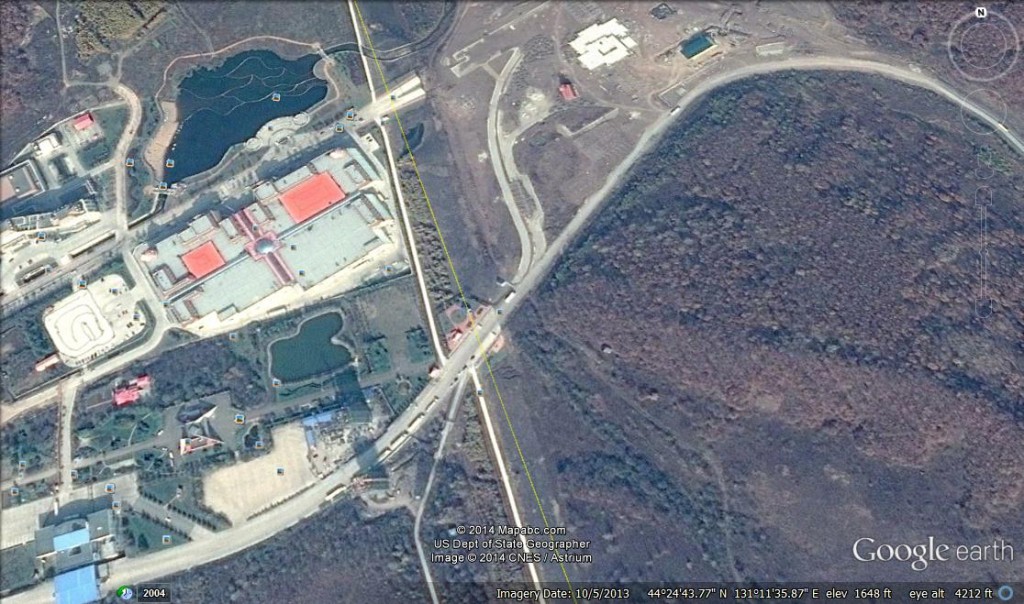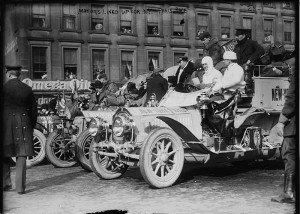The Thomas Flyer, the U.S. entry in the 1908 Great Race, arrived in Vladivostok on Monday, May 18, 1908 after a two day trip from Tsuruga, Japan on the steamship Mongolia. George Schuster, his team, and the Flyer departed on a Saturday afternoon just as we did, so I guess travel by ship/ferry hasn’t changed much time-wise in the past century!
The original U.S. team also went through Hachiman as we did, although the original team was nearly delayed when participants in a religious ceremony began attacking the Thomas Flyer! Fortunately, a Japanese priest intervened and the Flyer escaped. Click here to read more about this incident in the May 17, 1908 New York Times article.
Since we didn’t expect to hear from Svetlana about the progress of our cars through customs until this afternoon, we took a walking tour of Vladivostok this morning. According to the May 19, 1908 New York Times article, George Schuster and the Flyer team also had a delay at customs:
“It will scarcely be possible for the Thomas car to start on the road across Siberia before Wednesday [after arriving Monday], as there are various matters to arrange before the car can begin its trip. Customs delays will fill the better part of two days, and the autoists desire to obtain permits to carry firearms and to use the rails of the Trans-Siberian Railroad to cross bridges or when the road is impassable.”
We’re not planning to carry any firearms or use the railroad tracks, so I hope that makes things a little easier! Click here for the May 19, 1908 New York Times article.
For our walking tour, courtesy of the Lonely Planet Russia guidebook, we first made our way towards the train station, which is the terminus for the Trans-Siberian Railway. We were able to descend directly from the street to the main rail platform to view a monument and plaque that commemorate the 9,288 km railway from Moscow:
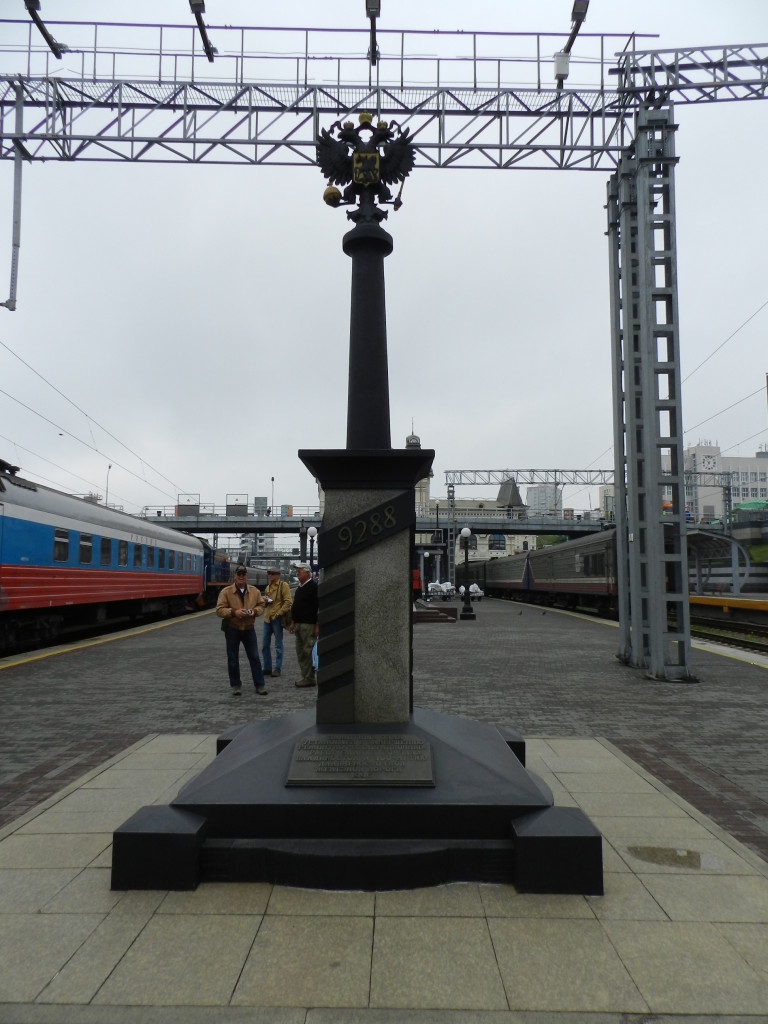
Terminus point for the Trans-Siberian Railroad in Vladivostok (Eileen Bjorkman photo)
After viewing the monument, we walked along the platform to the train station. I opened the door to enter and saw that we had to pass through a security check point. I started to close the door, but a friendly security guard waved us in. We were through security in about a minute, and the guard then gave us directions to the top floor of the station and told us it was very nice. The station was spotless and had beautiful architecture and pastel colors. Here is one picture of the inside:
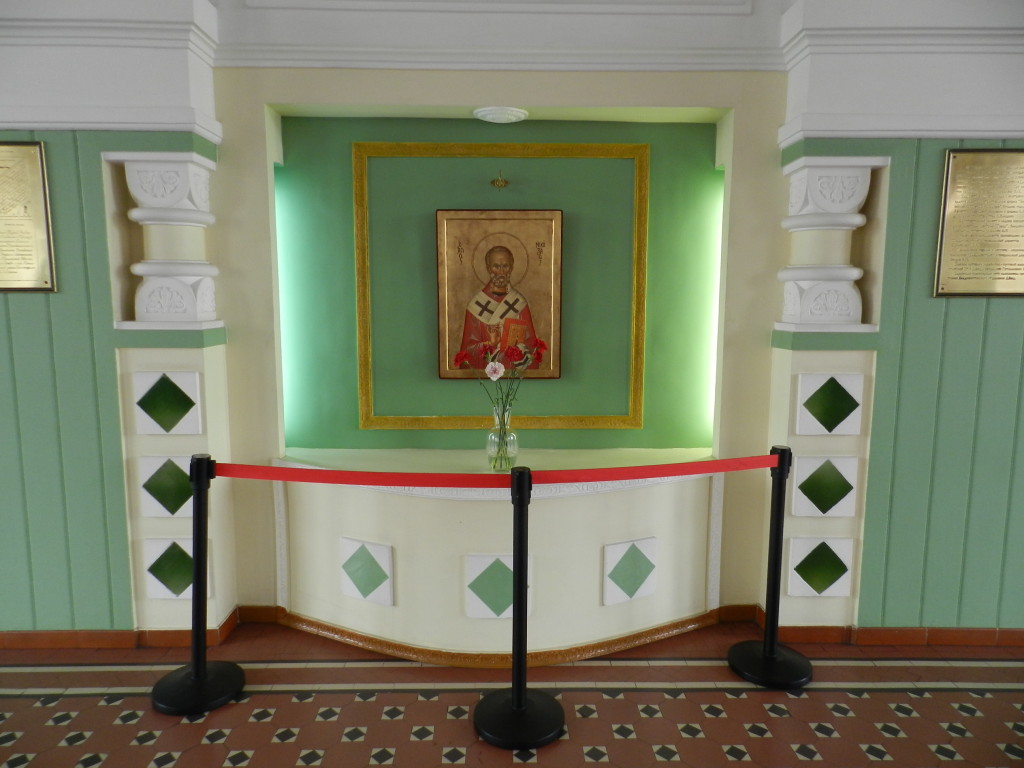
Inside of the Vladivostok Train Station (Eileen Bjorkman photo)
They had a very nice café that I could have stayed at all day, but we weren’t hungry and we still had lots of sights to see, so we moved on, strolling up Aleutskaya Street. I’ve been learning the Cyrillic alphabet, and once I figured out how to read the street signs, I managed to navigate to our next stop, the house where actor Yul Brenner was born. It’s now a barber shop:
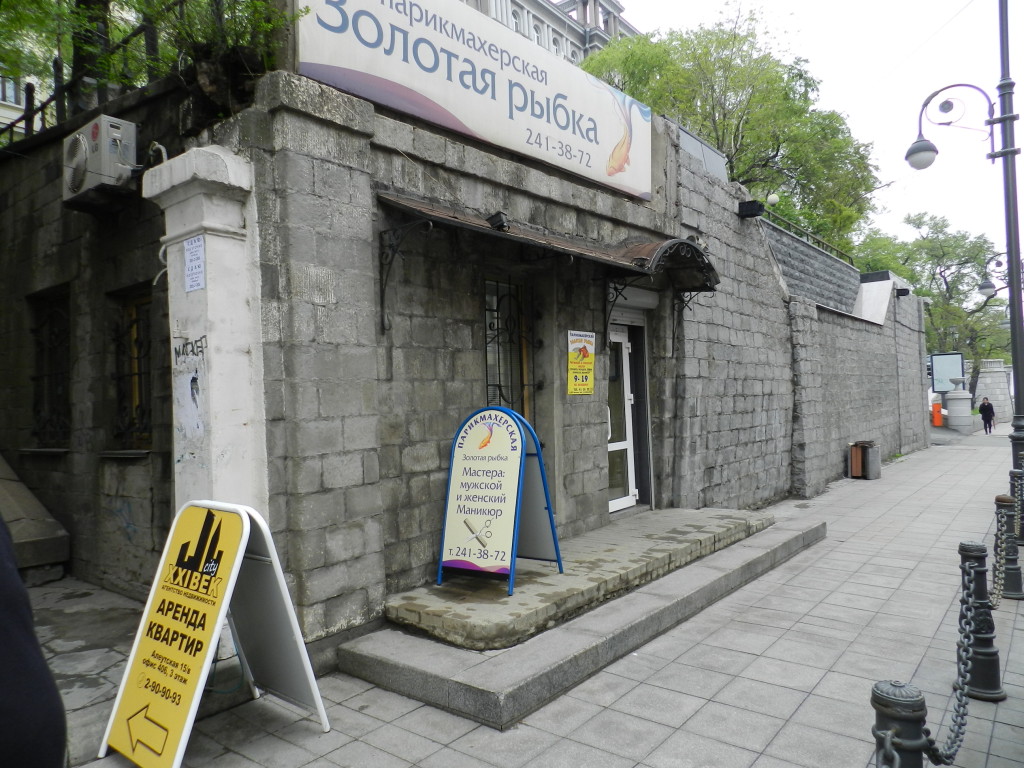
The house where Yul Brenner was born (Eileen Bjorkman photo)
Next we crossed a main street using a tunnel; these tunnel crossings are all over the place and we love them — in addition to being safe and efficient, they house small shops, similar to the underground concourse in Crystal City, Virginia, for those of you who have been there (I used to live there). We then entered an old department store, the GUM, that was filled with shops selling souvenirs, shoes, jewelry, telescopes, microscopes, toys, and just about anything else you can think of. I bought some refrigerator magnets and we wandered over to what we thought was the park that would take us to our next destination, an old Soviet submarine.
However, we had turned one park too soon, so after making our way down to the water past some construction, we walked directly along the waterfront until we bumped into the submarine. In addition to the submarine, there is also a wall inscribed with the names of Vladivostok residents who lost their lives in World War II; it reminded me of a smaller version of the U.S. Vietnam Memorial:
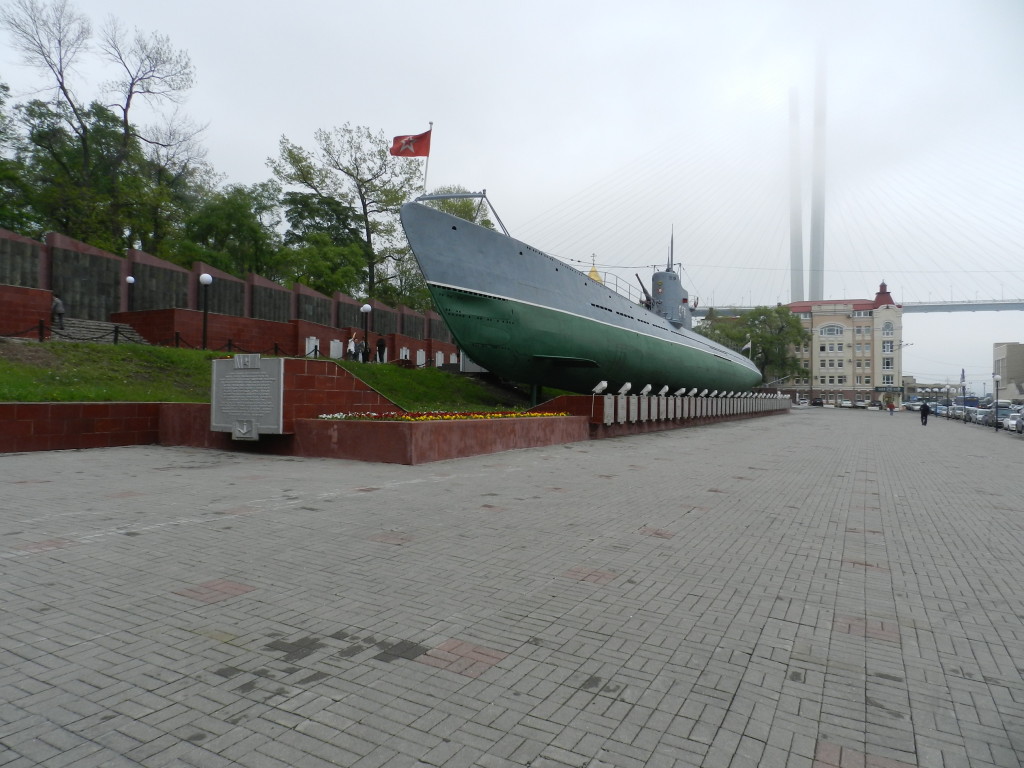
S-56 Submarine and Memorial Wall for Vladivostok residents lost in WWII (Eileen Bjorkman photo)
We paid 100 rubles (about $3) to tour the submarine. Of course, we were all most fascinated by the torpedo launcher:
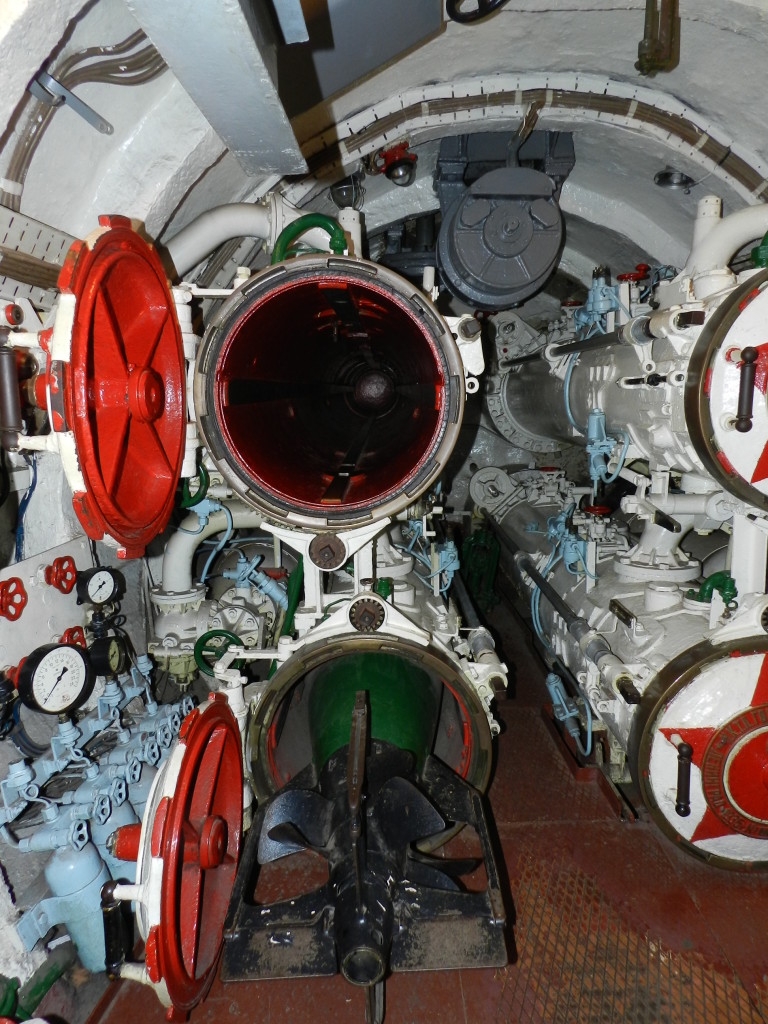
Torpedo launchers on the S-56 Submarine (Eileen Bjorkman photo)
After the submarine, we checked out the arch depicted below, which is a reconstruction of a monument to Tsar Nicholas II. The original monument was destroyed by the Soviets after the Russian Revolution in 1917.
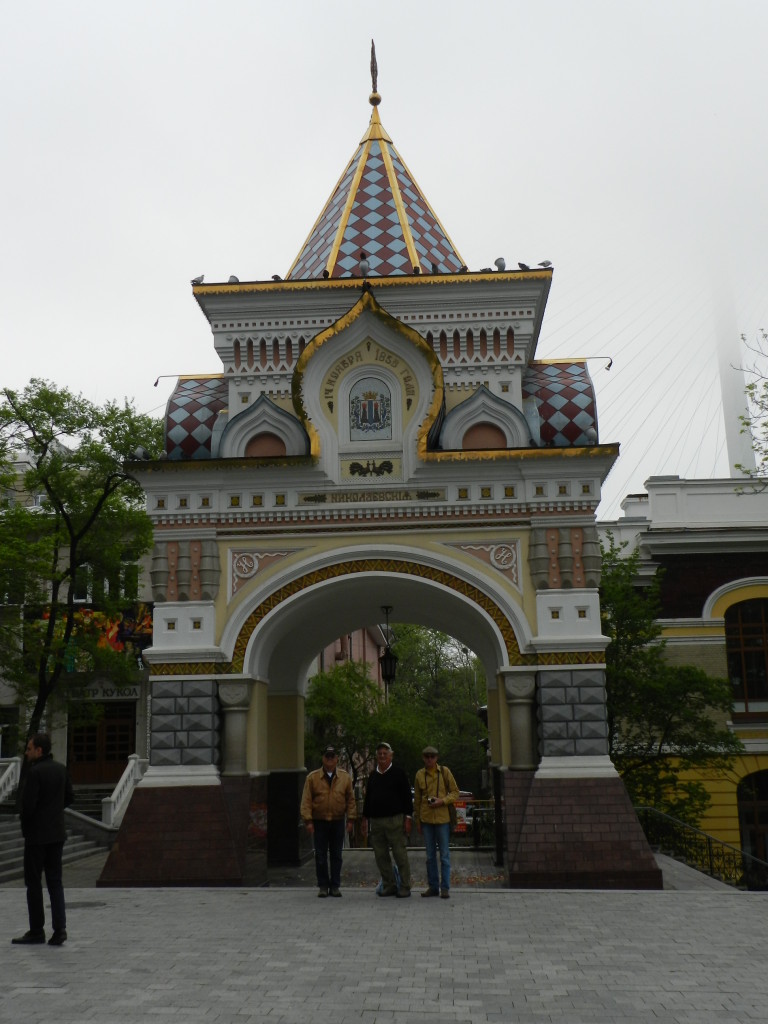
Reconstructed Arch for Tsar Nicholas II (Eileen Bjorkman photo)
About 3 o’clock, Svetlana called to say that she thought she would still get the paperwork for our cars today. However, the customs people are all very busy today, so we’re planning to meet Wednesday morning at 9 o’clock to start the process. If all goes well, we’ll bring the cars back to the hotel tomorrow morning and then head to China on Thursday.
